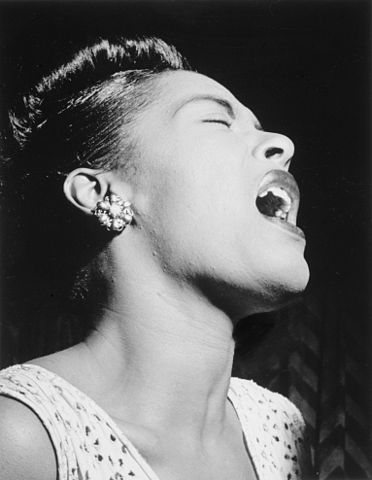As we approached Billie Holiday’s 100th birthday earlier this month (April 7, 1915 in Baltimore, MD), numerous musicians, performers, and jazz experts offered opinions about what makes Lady Day so indelible. Some mentioned her unique voice. Many focused on the emotional weight of her songs, remarking how well she translated her own misery and hardship into bluesy jazz. Others shorthanded it, saying only that Billie sang the truth.
I can’t disagree with any of those points, but they seem insufficient for explaining Holiday’s success. After listening carefully to her recordings over many years, I’ve come to appreciate the amount of effort she invested in each song and what a skillfully crafted stylist she was. Billie Holiday was no accident of nature. And considering her work from a writer’s perspective, Holiday’s habit of feeling her way through a song to find its truth is similar to the writing process. I often feel my way to the real meaning of a story through the act of writing it.
Numerous untrained musicians and singers have grown up listening carefully to music, and, as they mature, they formulate a unique musical logic that characterizes their work. Like Thelonious Monk, another brilliant musician of that era, Holiday’s lack of training worked to her advantage by freeing her from rules that may have otherwise restricted her style. Monk would combine seemingly incompatible chords and unusual timing to create a dissonance which, in turn, created an aesthetic tension. He succeeded with those compositions because he eventually resolved the conflict, reconciled the chords and produced something unexpected and delightful.
Holiday also manipulated timing but unlike Monk, who intentionally created chaos, used beat to evoke specific emotional qualities in a song. She loved Bessie Smith and her music shows a strong blues influence: the way she would hang phrases or stretch rests to slow down the pace, to give a song that distinctive melancholy, wistful flavor. Pianist Teddy Wilson, who backed Holiday on many classic numbers, once said that Holiday could sing an entire song “outside the beat.” Producing that provocative rhythm and mood created an emotional bond with her audience. It wasn’t just some song she was singing; it was very much her story.
![Billie Holiday, 1949 by Carl Van Vechten [Public domain], via Wikimedia Commons](http://keith-skinner.com/wp-content/uploads/2015/04/Billie_Holiday_1949-198x300.jpg)
She’s often described as a musician’s singer, and it’s certain that her approach to singing contributed something extra to the band’s chemistry during performances. Rather than sit on top of the music, she would plunge into it, change it, play off of the other musicians. That interaction usually resulted in a more personal, more profound performance, and its that quality that is probably most often characterized as soulful or truthful.
Billie Holiday did indeed have a unique voice and it’s unlikely anyone will ever reproduce it. That doesn’t mean other singers can’t learn from her techniques, even when crafting a completely different style. Her lessons aren’t limited to other singers, however; writers have much to learn from Holiday about pacing, tone, and phrasing. Perhaps the greatest lesson, one that her work demonstrates repeatedly, is that the key to telling a story is to take it to its deepest level, to discover and reveal its unique truth, regardless of the method of delivery.


Keith very interesting take on what writers can learn from music. Will feature this.
Thanks, Sandra. Hope you’re feeling better or as well as can be expected.